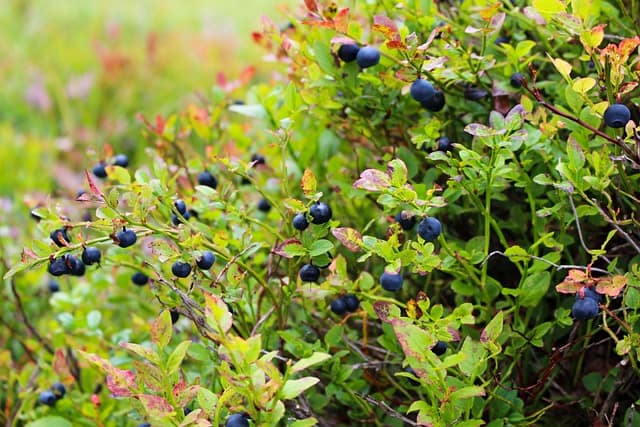Blueberries and raspberries are two of the most popular types of berries, and many gardeners wonder, can I plant blueberries and raspberries together? While they may look similar, these two plants have very different growing requirements.
Blueberries prefer acidic soil with a pH of 4.5 to 5.5, while raspberries prefer slightly acidic to neutral soil with a pH of 6.0 to 6.5.
Planting blueberries and raspberries together may seem like a good idea, but it’s important to understand their growing requirements before doing so. If the soil is not suitable for both plants, one or both may not thrive.
Additionally, some plants can have negative effects on others when planted too close together. To determine if blueberries and raspberries can be planted together, it’s important to consider factors such as soil pH, spacing, and companion planting.
Key Takeaways
- Blueberries and raspberries have different growing requirements and may not thrive if planted together in unsuitable soil.
- Proper soil preparation and spacing are important factors to consider when planting blueberries and raspberries together.
- Companion planting can be beneficial for blueberries and raspberries, but it’s important to choose compatible plants.
Other popular posts:
- Can a Carnivore Survive Without Plants?
- How Long Does Aloe Vera Take To Grow?
- How Big Do Succulents Get?
Understanding Blueberries and Raspberries
Blueberry Characteristics
Blueberries are perennial shrubs that belong to the heath family. They are native to North America and are grown for their sweet, juicy fruit. There are two main types of blueberries: lowbush and highbush. Highbush blueberries are the most commonly grown type and are usually cultivated for commercial purposes.
Highbush blueberries are characterized by their tall, upright growth habit and their ability to produce large, juicy berries. They prefer acidic soil with a pH between 4.0 and 5.5 and require a lot of water. They are also sensitive to frost and require protection during the winter months.
Raspberry Characteristics
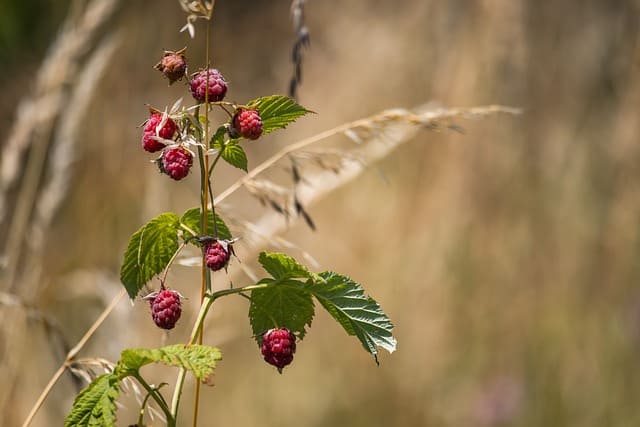
Raspberries are also perennial shrubs that are native to North America. They are grown for their sweet, juicy fruit and are available in many different varieties. There are two main types of raspberries: summer-bearing and everbearing.
Summer-bearing raspberries produce fruit once a year, while everbearing raspberries produce fruit twice a year.
Raspberries are characterized by their thorny canes and their ability to produce fruit on second-year wood. They prefer well-drained soil with a pH between 5.5 and 6.5 and require moderate amounts of water. They are also sensitive to frost and require protection during the winter months.
Blueberries and raspberries have different soil and pH requirements. Blueberries prefer acidic soil with a pH between 4.0 and 5.5, while raspberries prefer well-drained soil with a pH between 5.5 and 6.5. Therefore, it is important to plant them in separate beds or in areas with different soil conditions.
In addition, blueberries are generally more tolerant of colder temperatures than raspberries and can withstand temperatures as low as -35 degrees Fahrenheit. Raspberries are only hardy to -20 degrees
Fahrenheit and should be protected from frost in the spring. When planting blueberries, space plants 3 to 4 feet apart in rows that are 6 to 8 feet apart. When planting raspberries, space plants 2 to 3 feet apart in rows that are 6 to 8 feet apart.
Preparing the Soil
Before planting blueberries and raspberries together, it’s important to prepare the soil properly. This will ensure that both plants can thrive and produce a bountiful harvest.
Soil Conditions for Blueberries
Blueberries prefer acidic soil with a pH of 4.8 to 5.5. They also need well-drained soil that is rich in organic matter. If the soil is too alkaline, blueberries may not be able to absorb nutrients properly, which can lead to stunted growth and poor fruit production.
To prepare the soil for blueberries, it’s recommended to add peat moss or garden sulfur to lower the pH of the soil. It’s also important to ensure that the soil is well-drained and not too compacted. Adding organic matter such as compost or aged manure can help improve soil structure and fertility.
Soil Conditions for Raspberries
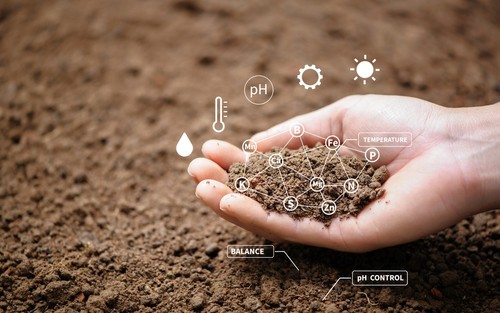
Raspberries prefer slightly acidic soil with a pH of 6.0 to 6.5. They also need well-drained soil that is rich in organic matter. If the soil is too alkaline, raspberries may not be able to absorb nutrients properly, which can lead to stunted growth and poor fruit production.
To prepare the soil for raspberries, it’s recommended to add compost or aged manure to improve soil structure and fertility. It’s also important to ensure that the soil is well-drained and not too compacted. Adding organic matter can help improve soil structure and fertility.
Planting Blueberries and Raspberries Together
Planting Blueberries
When planting blueberries and raspberries together, it’s important to ensure that they have enough space to grow and thrive. Blueberries need very acidic soil with a pH level of 4.8 to 5.5 to grow well, while raspberries need mildly acidic soil with a pH level of about 6.0.
To avoid any issues, it’s best to keep the two plants at least 10 feet apart from each other. Planting them in alternating rows is not recommended.
Blueberries can be planted in early spring or fall. When planting blueberries, it’s important to dig a hole that is twice as wide and deep as the root ball. Mix in some slow-release fertilizer or bone meal to help the plants establish roots. After planting, water the blueberries well and mulch around the base of the plant to help retain moisture.
If planting blueberries in a container, make sure to choose a large container that is at least 18 inches in diameter. Fill the container with a mix of peat moss, pine bark, and perlite to create a well-draining soil. Blueberries in containers need to be watered more frequently than those planted in the ground, so make sure to keep the soil moist.
Planting Raspberries
Raspberries can be planted in early spring or fall. When planting raspberries, it’s important to dig a hole that is deep enough to accommodate the roots. Mix in some compost or well-rotted manure to help improve the soil quality. After planting, water the raspberries well and mulch around the base of the plant to help retain moisture.
Raspberries can be grown in rows or in a hedgerow. When planting in rows, space the plants 2 to 3 feet apart with 8 to 10 feet between rows. When planting in a hedgerow, space the plants 18 to 24 inches apart with 4 to 5 feet between rows.
If planting raspberries in a container, choose a container that is at least 24 inches in diameter. Fill the container with a well-draining soil mix and plant the raspberry plant at the same depth it was in its original container. Water the plant well after planting and keep the soil moist.
Companion Planting
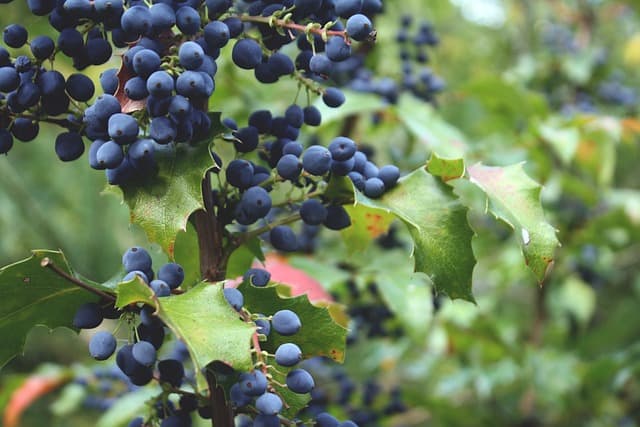
Companion planting is the practice of planting different plants together in a way that benefits each other. Blueberries and raspberries can be planted together as companion plants, but it’s important to choose the right companion plants for them.
Companion plants for blueberries include plants that thrive in acidic soil, just like blueberry bushes. Some good companion plants for blueberries are onions, peppers, garlic, marigolds, chives, nasturtiums, leeks, chamomile, chervil, and yarrow.
These plants attract beneficial insects and help control pests and diseases that can damage blueberry bushes.
On the other hand, it’s best to avoid planting nightshades like tomatoes, potatoes, and eggplants near blueberry bushes. These plants can compete with blueberries for nutrients and water and can also attract pests and diseases that can harm blueberry bushes.
Companion plants for raspberries include clover, lavender, garlic, onion, chives, marigolds, nasturtiums, oats, and buckwheat. These plants can help attract pollinators during the spring raspberry blossom season and help control soil-borne fungal diseases like verticillium wilt and phytophthora root rot.
It’s important to avoid planting fennel or strawberries near raspberry plants. Fennel can inhibit the growth of raspberry plants, while strawberries can compete with them for nutrients and water.
Care and Maintenance
Caring for Blueberries
Blueberries require consistent moisture, so it’s crucial to water them regularly, especially during the growing season. It’s best to water them deeply once a week rather than shallowly more often. Blueberries also benefit from a layer of mulch to retain moisture and prevent weeds. Pine needles or sawdust work well as mulch, but avoid using wood chips, which can rob the soil of nitrogen.
Pruning is essential to keep blueberries healthy and productive. It’s best to prune in late winter or early spring before new growth appears. Remove any dead or diseased wood, as well as any branches that are crossing or rubbing against each other.
Blueberries also benefit from annual fertilization with an acidic fertilizer, such as ammonium sulfate or cottonseed meal. Apply the fertilizer in early spring before new growth appears.
Caring for Raspberries
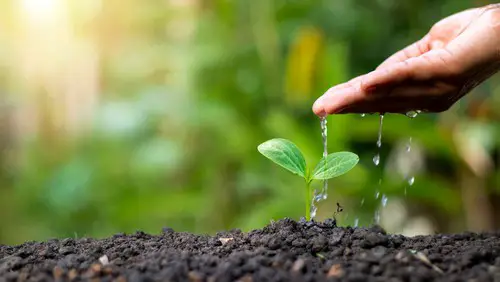
Raspberries also require consistent moisture, especially during the growing season. Water deeply once a week, and mulch around the plants to help retain moisture and suppress weeds.
Raspberries benefit from annual pruning to remove dead or diseased wood, as well as any canes that have produced fruit. It’s best to prune in late winter or early spring before new growth appears.
Raspberries also benefit from annual fertilization with a balanced fertilizer, such as a 10-10-10 or 16-16-16 blend. Apply the fertilizer in early spring before new growth appears. Raspberries prefer full sun but can tolerate partial shade in hotter climates. In colder climates, raspberries benefit from protection from frost in the spring.
Pollination
When it comes to planting blueberries and raspberries together, pollination is an important factor to consider. Raspberries are self-pollinating, which means that they can produce fruit with just one bush. However, blueberries are not self-pollinating, and at least two bushes are required for cross-pollination to occur and for fruit to grow.
Pollination is the process by which pollen from the male part of a flower (anther) is transferred to the female part (stigma) of the same or another flower. This transfer of pollen can occur through different means, including wind, water, and pollinators such as bees, butterflies, and hummingbirds.
For blueberries, cross-pollination is needed to produce the best fruit. This means that the pollen from one variety of blueberry bush needs to be transferred to the flowers of another variety of blueberry bush. Bees are the primary pollinators of blueberries, and it is important to have bee-attracting plants nearby to ensure good pollination.
It is also important to note that different varieties of blueberries have different pollination requirements. Some varieties are self-fertile, which means that they can produce fruit with their own pollen.
Other varieties are partially self-fertile, which means that they can produce some fruit with their own pollen but produce more fruit with cross-pollination. Finally, some varieties are completely self-infertile, which means that they cannot produce fruit without cross-pollination from another variety.
Pests and Diseases
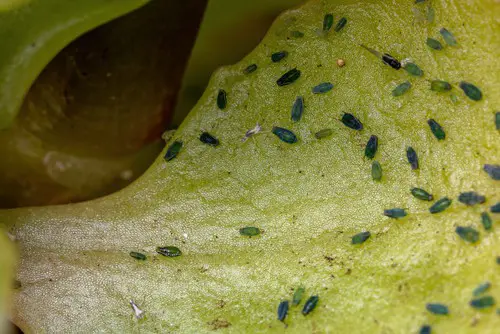
Blueberries and raspberries can be susceptible to a variety of pests and diseases, which can impact their growth and fruit production. It is important to be aware of these potential issues and take steps to prevent and manage them.
Pests
Some common pests that can affect blueberries and raspberries include:
- Spotted wing drosophila: This fruit fly lays eggs in ripening fruit, causing it to rot and become inedible. To prevent infestations, it is important to harvest fruit as soon as it is ripe and to remove any fallen fruit from the ground.
- Japanese beetles: These beetles can defoliate plants and damage fruit. Handpicking and using insecticidal soap can help control their populations.
- Aphids: These small insects can suck the sap from plants and transmit viruses. Insecticidal soap and beneficial insects like ladybugs can help control their populations.
Fungal Diseases
Some common fungal diseases that can affect blueberries and raspberries include:
- Botrytis blight: This disease causes fruit to rot and can also affect leaves and stems. To prevent it, it is important to prune plants to improve air circulation and to remove any infected plant material.
- Anthracnose: This disease can cause fruit to rot and leaves to develop brown spots. Fungicides and pruning can help control its spread.
- Powdery mildew: This disease can cause a white, powdery coating to develop on leaves and fruit. Fungicides and pruning can help control its spread.
Pest Control
To control pests and diseases, it is important to take a proactive approach. This can include:
- Monitoring plants regularly for signs of infestation or disease
- Removing any infected plant material
- Pruning plants to improve air circulation and reduce the risk of fungal diseases
- Using insecticidal soap and fungicides as needed
- Encouraging beneficial insects like ladybugs and lacewings to help control pest populations
By taking these steps, gardeners can help ensure that their blueberries and raspberries stay healthy and productive.
Other Plants and Their Effects
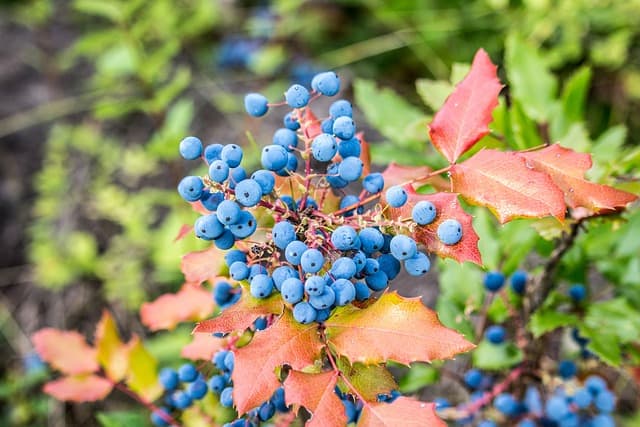
When planting blueberries and raspberries together, it’s important to consider the effects of other plants in the area. Some plants can have a positive effect on the growth and health of blueberries and raspberries, while others can have a negative impact.
One plant that can have a negative effect on blueberries and raspberries is rhododendrons. Rhododendrons are members of the heath family and can release toxins in the soil that are harmful to blueberries and raspberries. Similarly, pine and fir trees can also release acidic toxins that can harm these berry plants.
On the other hand, some plants can have a positive effect on the growth of blueberries and raspberries. Groundcovers like clover and vetch can help to fix nitrogen in the soil, which can benefit the growth of these berry plants. Cranberries can also be a good companion plant for blueberries, as they prefer similar growing conditions.
When it comes to evergreens, yew and azalea plants should be avoided when planting blueberries and raspberries. These plants can release toxins that are harmful to these berry plants. However, other types of evergreens like cedar and juniper can be beneficial, as they can help to repel pests that can damage these berry plants.
It’s also important to consider the type of raspberry plant being grown. Day-neutral raspberries can be planted alongside blueberries, as they have different growing habits and will not compete for resources. However, other types of raspberries may not be as compatible with blueberries.
Conclusion
Additionally, blueberries are not self-pollinating, which means that at least two bushes need to be planted to ensure fruit production. On the other hand, raspberries are self-pollinating, and a single bush can produce berries. Therefore, it is important to consider the number of plants needed to ensure a successful harvest.
When planting blueberries and raspberries together, it is recommended to space the plants 3 to 4 feet apart in rows that are 6 to 8 feet apart. This allows each plant to have enough space to grow and develop properly.
Furthermore, it is important to protect raspberries from frost in the spring as they are only hardy to -20 degrees Fahrenheit.
Frequently Asked Questions
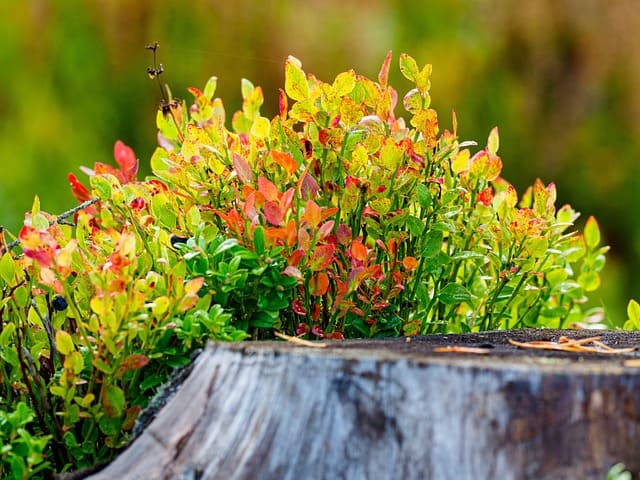
What berries can be planted together?
Many types of berries can be planted together, including blueberries and raspberries. However, it is important to consider the soil requirements and growing conditions of each type of berry before planting them together.
Can I plant different berry bushes together?
Yes, different types of berry bushes can be planted together as long as their growing conditions and soil requirements are similar. For example, blueberries and blackberries can be planted together because they both prefer acidic soil.
What not to grow with raspberries?
Raspberries should not be grown near plants that are susceptible to verticillium wilt, such as tomatoes, potatoes, and peppers. These plants can spread the disease to raspberries and cause significant damage.
Can you plant blueberries, raspberries, and blackberries near each other?
Yes, it is possible to plant all three types of berries near each other, but it requires careful planning and preparation. It is important to consider the soil requirements and growing conditions of each type of berry, as well as the potential for cross-pollination.
Can you plant blueberries and strawberries together?
While blueberries and strawberries have different soil requirements, they can still be planted together as long as the soil is acidic enough for the blueberries.
However, it is important to keep in mind that strawberries can spread diseases to blueberries, so it is best to plant them in separate areas.
Can you plant blueberries and blackberries together?
Yes, blueberries and blackberries can be planted together as long as they are both given enough space to grow and their soil requirements are similar.
However, it is important to keep in mind that blackberries can spread diseases to blueberries, so it is best to plant them in separate areas if possible.

Hey, I’m Lisa and I’ve been an avid gardener for over 30 years. I love writing, talking and living in the garden! Feel free to connect with me on my socials below

